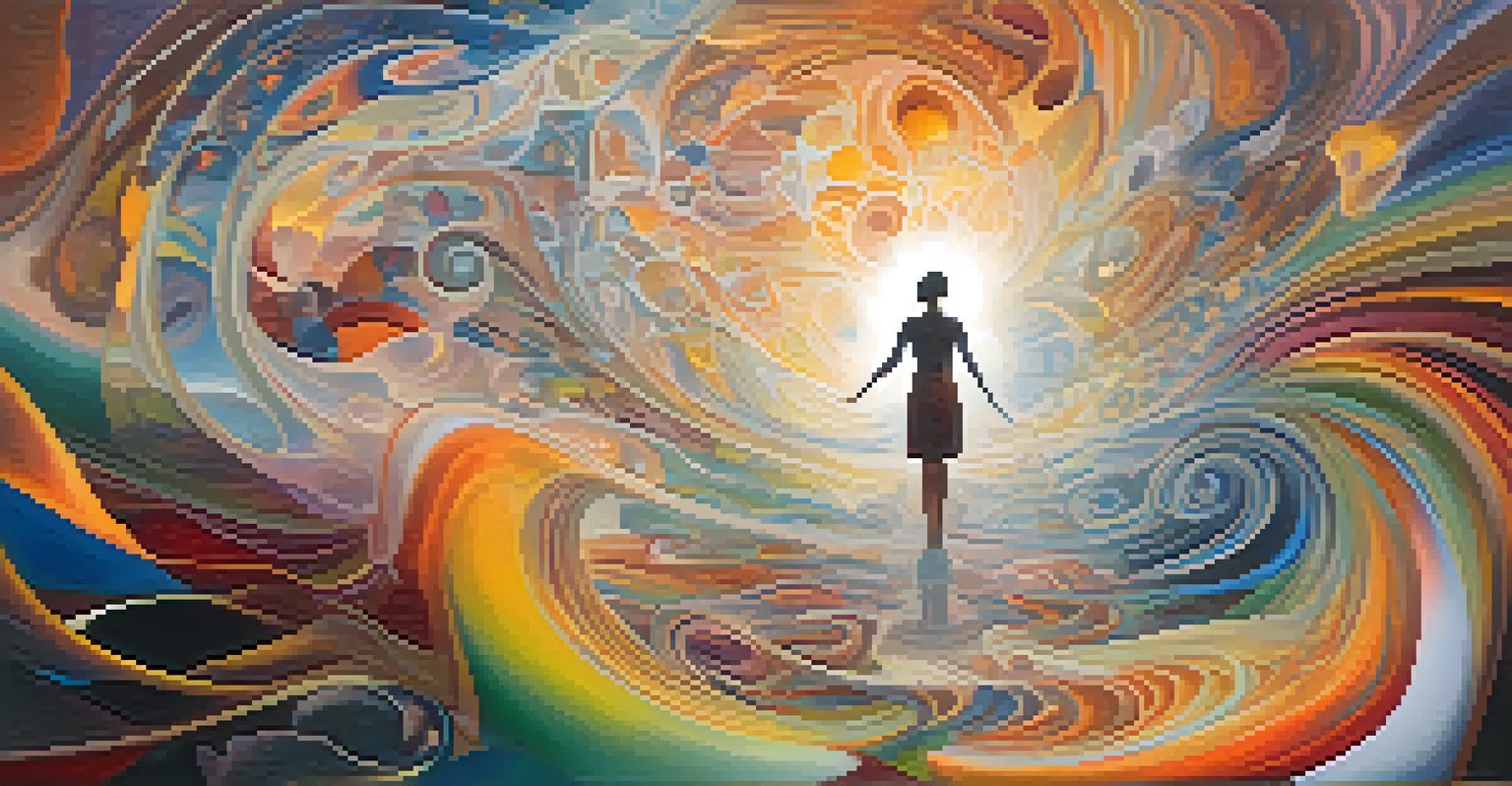Dreams and Entheogens: A Journey Through Altered States

Understanding Dreams: The Window to Our Subconscious
Dreams have long fascinated humans, acting as a portal to our subconscious mind. They are a tapestry of emotions, experiences, and memories, often reflecting our waking life in surreal ways. For instance, you might dream of flying when you're feeling liberated or being chased when you're anxious. By analyzing these dreams, we can gain insights into our emotional state and personal challenges.
Dreams are the touchstones of our character.
The science of dreaming, known as oneirology, explores how and why we dream. Researchers suggest that dreams might serve several purposes, including memory consolidation and emotional processing. So, when you wake up from a vivid dream, it could be your mind's way of sorting through complex feelings or unresolved issues.
Moreover, dreams can also inspire creativity. Think about famous artists and writers who have drawn inspiration from their dream experiences. Salvador Dalí, for example, often incorporated dream-like imagery into his surrealist paintings, reminding us that our nightly adventures can spark our imagination.
What Are Entheogens? A Brief Overview
Entheogens are substances that alter consciousness and are often used in spiritual or religious contexts. The term itself comes from the Greek words 'entheos,' meaning 'full of the god,' and 'genes,' meaning 'born of or produced by.' Common examples include psilocybin mushrooms, ayahuasca, and peyote, all known for their profound effects on perception and thought.

These substances have been used for centuries in various cultures as tools for personal growth and spiritual exploration. They can induce altered states of consciousness, allowing individuals to experience a heightened sense of awareness and connection to the universe. For many, these experiences can be transformative, leading to new insights about life and themselves.
Dreams Reflect Our Inner Self
Dreams serve as a window into our subconscious, revealing our emotions and personal challenges.
Despite their powerful effects, entheogens are often surrounded by stigma and misunderstanding. It's essential to approach these substances with respect and understanding, recognizing that their potential benefits come with risks. Responsible use, guided by informed practices, can lead to meaningful experiences.
The Intersection of Dreams and Entheogens
Both dreams and entheogens offer a glimpse into altered states of consciousness, yet they arise from different contexts. While dreams occur naturally during sleep, entheogens require intentional use, often in a ritualistic or therapeutic setting. This intersection opens up fascinating discussions about the nature of reality and perception.
Psychedelics are a way to explore the deeper layers of consciousness.
Many users of entheogens report experiences reminiscent of their dreams, such as vivid imagery, intense emotions, and feelings of unity with the cosmos. This similarity suggests that both pathways tap into deeper layers of the mind, providing a unique opportunity for self-discovery. For instance, someone might find parallels between a dream of a serene landscape and an entheogenic journey to a similar place.
Exploring this connection can lead to a richer understanding of how we process and interpret our experiences. By examining our dreams alongside our entheogenic experiences, we can unravel the threads that connect our subconscious thoughts with our conscious explorations.
Cultural Perspectives on Dreams and Entheogens
Throughout history, various cultures have revered dreams and entheogens as sacred tools for insight and healing. Indigenous tribes often incorporate plants with entheogenic properties into their rituals, believing these substances can bridge the gap between the physical and spiritual worlds. In contrast, many cultures view dreams as omens or messages from the divine.
For example, the use of ayahuasca in Amazonian cultures often involves dreaming and visionary experiences, guiding individuals through personal or communal challenges. Similarly, Native American tribes have used peyote in ceremonies to connect with spiritual realms, emphasizing the importance of these experiences in their cultural narratives.
Entheogens Offer Transformative Insights
Entheogens can induce altered states of consciousness, leading to profound personal growth and spiritual exploration.
Understanding these cultural perspectives can deepen our appreciation for the roles that dreams and entheogens play in human experience. They serve as reminders that the quest for knowledge and understanding spans across time and geography, linking us to our ancestors and their wisdom.
The Therapeutic Potential of Entheogens
Recent research has begun to uncover the therapeutic benefits of entheogens in treating mental health issues like depression, anxiety, and PTSD. Studies suggest that these substances can help individuals confront and process traumatic experiences, allowing for emotional release and healing. For instance, psychedelic therapy has shown promising results in controlled settings, leading to long-lasting positive changes.
Moreover, the integration of entheogens into psychotherapy often parallels the insights gained from dreams. Just as dreams can provide clarity and understanding of our subconscious struggles, entheogenic experiences can highlight unresolved feelings, offering new perspectives on difficult emotions. This synergy between the two can enhance therapeutic outcomes.
However, it's crucial to approach these treatments with caution and under professional guidance. The therapeutic potential of entheogens is still being studied, and understanding the right context and setting is vital to ensure safety and efficacy.
Navigating the Risks and Benefits of Entheogens
While entheogens can offer profound experiences, they also come with risks that must be acknowledged. Adverse psychological effects, such as anxiety or paranoia, can occur, particularly in uncontrolled environments. It's essential to educate oneself about the substance, its effects, and the importance of set (mindset) and setting (environment) before engaging in such experiences.
Additionally, not everyone may be suited for entheogenic experiences. Factors such as pre-existing mental health conditions or personal circumstances should be carefully considered. For instance, someone with a history of psychosis might be at greater risk for negative experiences when using these substances.
Cultural Views Shape Our Understanding
Different cultures have long valued dreams and entheogens as sacred tools for insight and healing.
Balancing the potential benefits with the risks is crucial for anyone considering entheogens. By being informed and prepared, individuals can make choices that lead to safe and meaningful explorations of consciousness.
Embracing the Journey: Personal Reflections and Insights
Ultimately, the journey through dreams and entheogens invites us to explore the depths of our consciousness. Both pathways offer unique opportunities for growth, healing, and understanding. By reflecting on our experiences, we can cultivate a greater awareness of ourselves and our place in the world.
Many individuals who engage with these altered states find themselves questioning their beliefs and assumptions about reality. This can lead to profound personal transformations, as they learn to navigate their inner landscapes with newfound clarity and openness. It's a journey that encourages curiosity and self-discovery.

As we embrace these experiences, it's essential to share our insights with others. By fostering a community of understanding and support, we can continue to explore the rich tapestry of dreams and entheogens together, paving the way for deeper connections and shared wisdom.